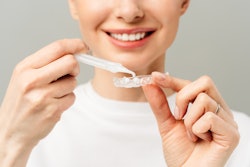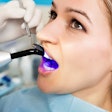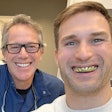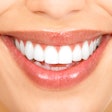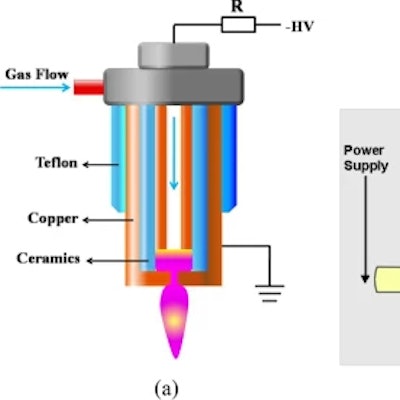
Using a cold plasma jet to apply hydrogen peroxide gel for between five and 10 minutes may achieve significant tooth whitening for dental patients, according to a new study published in BMC Oral Health.
However, treatments lasting longer than 20 minutes may result in color regression and enamel damage, the authors wrote.
"It takes only 5–10 min to achieve a satisfactory bleaching effect, with the enamel morphology, microhardness and surface roughness comparable to those from traditional clinical methods," wrote the authors, led by Dr. Jie Pan of Peking University School and Hospital of Stomatology in China (BMC Oral Health, November 24, 2022, Vol. 22, 535).
Teeth bleaching with hydrogen peroxide is a routine dental procedure, but it is not perfect, especially when a high concentration is used for prolonged periods of time. It's been reported that the combination of a whitening gel and plasma can improve bleaching effectiveness compared to solely using a gel.
During the whitening process, ultraviolet radiation, heat, and reactive species, including hydroxyl radicals, interact directly or indirectly with the enamel and the pulp tissue. This leads to a temperature increase in the tooth pulp chamber and modifications in enamel surface morphology and microhardness. However, before this new tooth bleaching method can be used in the clinical setting, safety issues must first be addressed, the authors state.
To evaluate the time-dependent efficacy and safety of tooth bleaching, a cold plasma jet was used to apply hydrogen peroxide in concentrations of 6%, 15%, 25%, and 35% to extracted, undamaged human teeth. The 50 teeth were broken into groups of 10.
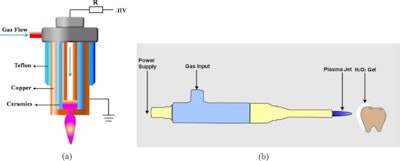 (a): A schematic diagram of the cold plasma device and the plasma microjet (PMJ). (b): Schematic diagram of the PMJ treatment of extracted tooth. Image courtesy of Pan et al. Licensed by CC BY 4.0.
(a): A schematic diagram of the cold plasma device and the plasma microjet (PMJ). (b): Schematic diagram of the PMJ treatment of extracted tooth. Image courtesy of Pan et al. Licensed by CC BY 4.0.Each group was given a different hydrogen peroxide concentration with plasma. One group was given 35% gel without plasma, and one was the control group. The treatment time was completed at intervals between five and 20 minutes. The tooth bleaching was evaluated by spectrophotometer, the authors wrote.
About 65% of the maximum color change occurred after a five-minute treatment with cold plasma and hydrogen peroxide, and about 90% of the maximum color change occurred after a 10-minute treatment. Meanwhile, the microhardness level decreased, and roughness increased in teeth that underwent treatment lasting longer than 20 minutes, the study's authors wrote.
However, 20-minute treatments with cold plasma and the bleaching gel may lead to color regression and damaged enamel, the authors wrote.
The study had limitations, including that it remains unclear how tooth enamel reacts with the mechanisms of cold plasma, Pan and colleagues wrote.
"Five-10 min(ute) was the best treatment time from which we can get an ideal tooth bleaching effect and less influence on tooth enamel and pulp tissue when using cold plasma and hydrogen peroxide gel" they concluded.





